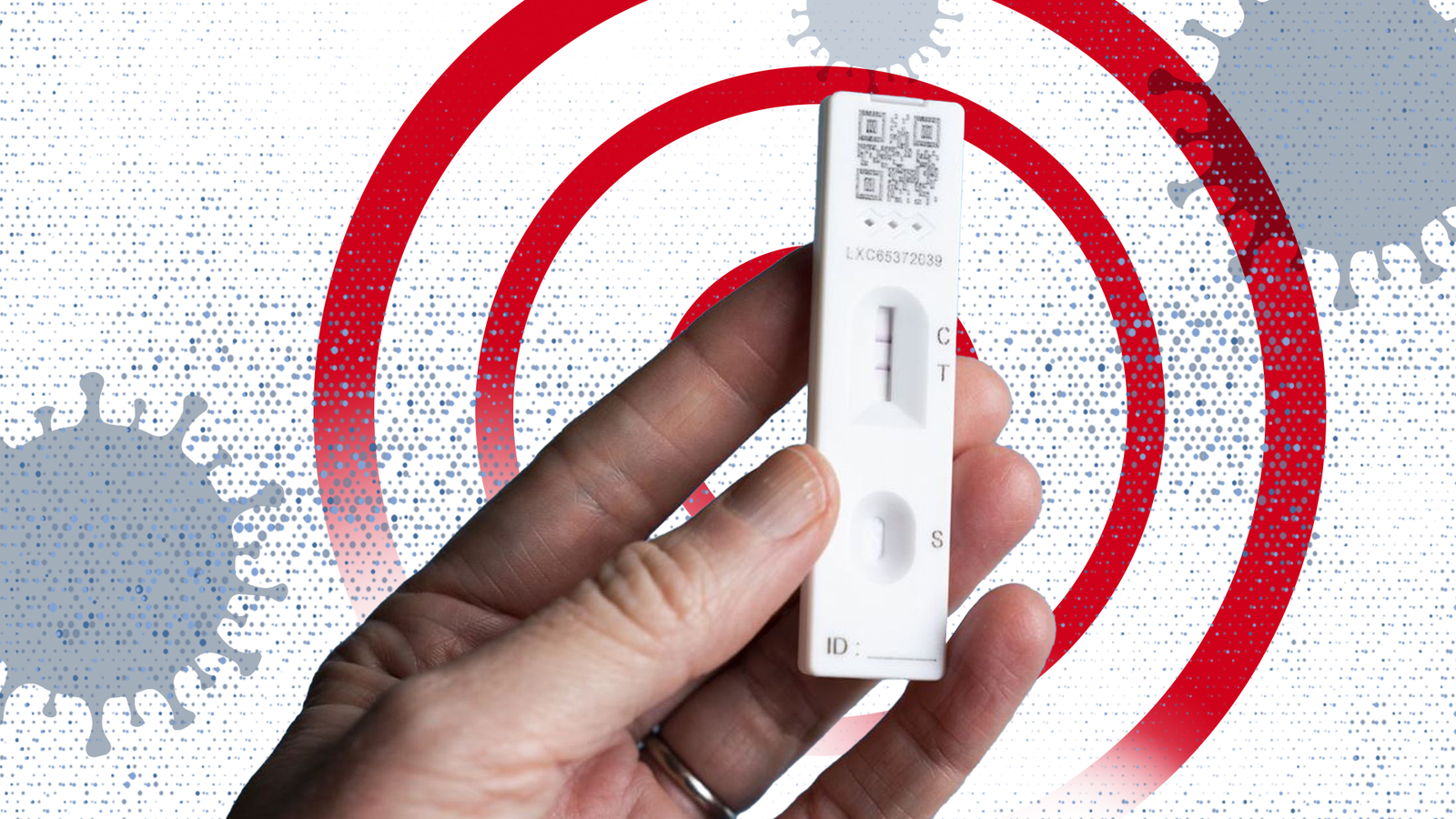Although virus levels are currently decreasing, scientists predict they will go back up again as we start to socialise more in the run-up to 25 December.
By Lara Keay, News reporter @LaraKeay
The start of the festive season may bring back memories of COVID spikes recent Christmases have brought with them.
Although virus levels are currently decreasing, scientists predict they will go back up again as we start to socialise more in the run-up to 25 December.
And a sub-lineage of the so-called ‘Pirola’ variant – JN.1 – is causing concern among some experts – even though it hasn’t spread widely enough yet for the UK Health Security Agency to sub-categorise it in its sequencing data.
Here Sky News looks at where it came from, how it’s spreading in the UK and how that is likely to change in the coming weeks.
What is JN.1 and how widespread is it in the UK?
JN.1 is a sub-lineage of the BA.2.86 Omicron variant.
It was first detected in Luxembourg in August, before spreading to the US, UK, France and other countries.
Its parent was first detected in Denmark in July, with the first BA.2.86 cases appearing in the UK in August. It is sometimes referred to as the ‘Pirola’ variant – but the World Health Organisation hasn’t given it an official name, as it is still a type of Omicron.
JN.1 has one mutation in its spike protein (which dictates how easily it can infect our cells) compared to BA.2.86. But there are several other mutations elsewhere.
The latest genomic sequencing data, up to 5 November, shows the EG.5.1 variant as still the most dominant in the UK at 36%, followed by XBB and XBB.1.16, which make up 25% and 14% of sequenced cases respectively.
BA.2.86 only represents 13% of sequenced cases, but professor of innate immunity at the University of Cambridge Clare Bryant says it will “probably become the next common variant”.
Mutations will ‘probably make it more infectious’
Professor Bryant describes the various mutations in JN.1 as “interesting”, including some unseen since the Alpha and Beta variants in 2020 and 2021.
She says although there isn’t enough data to confirm anything yet, the changes could mean JN.1 evades our immune systems more easily – and replicates faster.
“The change in the spike protein will probably correlate to it being more infectious.
“And that’s what’s caused us the most problems so far – because you can’t control something that’s that infectious.”
Professor Sheena Cruickshank, immunologist at the University of Manchester, agrees and adds that it could take longer to recover from – or cause more severe disease.
“One of the mutations JN.1 seems to have has the potential to help it better latch onto cells, making it better at infecting us,” she tells Sky News.
“That coupled with immune evasion mechanisms mean it may be tricky for our immune systems to get rid of.”
Read more:
Gove apologises for pandemic ‘errors’
Hancock accuses Cummings of lying to inquiry
Raab advised Johnson to get vaccine live on TV
Professor Nicolas Locker, a virologist at the Pirbright Institute, says, however, that so far there has been no indication of increased infectiousness or disease severity.
“I think we’re just seeing the natural evolution of COVID and I don’t think there’s anything right now we should be overly worried about,” he says.
“These are very small changes in comparison to the ones between Omicron and the previous set of variants. And we haven’t seen a change in symptoms or severity.”
Vaccines still likely to be effective
Professor Locker says that another reason not to be too concerned is vaccine protection.
Vaccines given as part of the current booster rollout have been updated to protect against the XBB.1.5 Omicron variant, which has also been proven to work against JN.1’s parent BA.2.86.
Professor Cruickshank adds that “by inference” this should also mean current vaccines work well against JN.1.
Click to subscribe to the Sky News Daily wherever you get your podcasts
But all three scientists point to low vaccination levels as a more general cause of concern.
Now only the over 65s, care home residents, carers, health and social care workers, and the clinically vulnerable can get booster jabs on the NHS.
And of those groups, only around 50% are taking up the offer, meaning vaccine protection is relatively low.
‘Large rise in cases likely this winter’
The latest data, which covers the week ending 12 November, shows COVID cases decreasing from a positivity rate of 6.6% to 5.8% of the population.
But with the Christmas period and more indoor gatherings, this is likely to reverse, the scientists say.
“We’re going to see a fairly large rise in cases this winter,” Professor Locker says. “Not because JN.1 is more problematic, infectious or severe, but because we’re losing our defences – protections afforded by our last set of boosters and our immunity is waning.”
Professor Bryant adds that people have become “complacent” about COVID – despite “lots of people having it at the moment”.
“There are lots of other germs around as well – flu is circulating and other colds.
“If you have symptoms you should test for COVID so you know how best to protect those around you.”

Sarah Carter is a health and wellness expert residing in the UK. With a background in healthcare, she offers evidence-based advice on fitness, nutrition, and mental well-being, promoting healthier living for readers.








